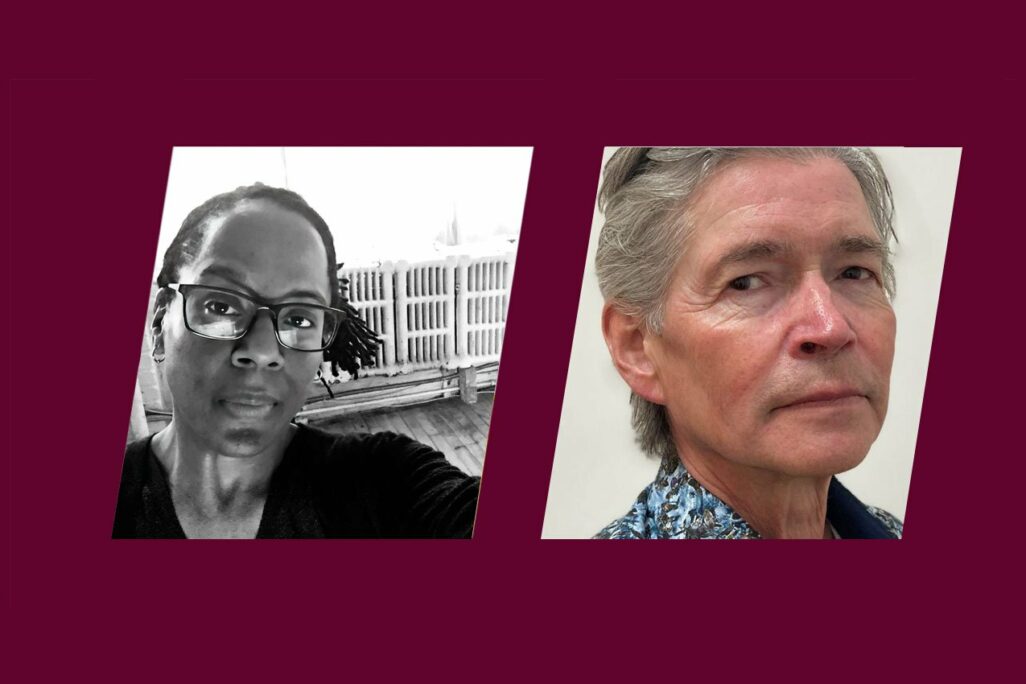On 23 March, the MacKenzie Art Gallery invites visitors to experience two brand-new exhibitions that explore the power of archives and the strategic erasures and misrepresentation of Black and Indigenous peoples from Western histories.
Organized and circulated by the Kitchener-Waterloo Art Gallery and curated by Director of Programs Crystal Mowry, Deanna Bowen: Black Drones in the Hive is a landmark exhibition that exposes the omission of Black history in both institutions and their policies. Stopping in the prairies at the MacKenzie, Black Drones in the Hive offers an opportunity for reflection on the collections, values, and the ethics of ownership and narrative within museums and galleries with direct links to historically indentured people. The title of the exhibition recalls a statement made by a Deputy Reeve of Kitchener, William Jaffray when he called a Black man named William Robinson that lived in a Kitchener labour camp a “perfect black drone in the hive”—confronting the presentation of Black people in history told through the narrative of colonial authors.
Comprised of approximately one hundred objects including framed images, audio, and video elements. The combination of archives, historical publications, and wartime propaganda presented in Black Drones in the Hive weaves together narratives of labour, migration, dispossession and militarization. Through this sprawling exhibition, Bowen illuminates what is often overlooked—connecting history with contemporary conversations on race, colonization, and cultural monuments.
“As a museum that prioritizes the ways in which contemporary art can inform our understanding of a shared past, the MacKenzie Art Gallery looks to artists to help us understand what precipitates this moment and where our actions may lead us,” says Director of Programs and Curator Crystal Mowry. “Deanna Bowen is an artist who deftly crafts a paper trail for grievances that underlie a reckoning. Through her extensive research, she shines a light on the various avenues through which power can enable erasure and refuse duty.”
Paul Seesequasis—Turning the Lens: Indigenous Archival Project celebrates the everyday life and ongoing resilience of Indigenous communities. Curated by Arin Fay with Felicia Gay and organized by the Touchstones Nelson: Museum of art and History, the exhibition features archival images of Indigenous peoples from the 1950-60s taken by photojournalist Rosemary Gilliat Eaton and from approximately 1919 by Regina-based photographer Edgar Rossie. The exhibition invites visitors to consider the the relationship between history and public memory. The project began in 2015 while researching the digital collections of national and provincial archives, libraries, museums, and historical societies, where Paul began to post the images to social media. The result was an overwhelming online response, revealing familial and community connections. The Edgar Rossie photographs are a new addition for the MacKenzie presentation, that invites a similar public dialogue around this collection of primarily studio portraits of various Treaty Four leaders from the territory. Turning the Lens is not a static exhibition, but an extended research project, which invites visitors and community members to contribute their knowledge and identify people they recognize who have been represented yet unidentified in these archives. It is intended to emphasize the survival of Indigenous ancestors, the erosion of genocidal policies and the determination to keep familial ties, languages, and customs alive.
“I have personally enjoyed Paul Seesequasis’s research of Indigenous folks within the photographic archive on social media over the years; his work has offered a counterpoint to what has historically been situated as an imperial gaze on Indigenous bodies. Concepts of manifest destiny, terra nullius, and colonization were ideologies made possible through imperialism,” states Curatorial Fellow Felicia Gay. “Turning the Lens is not only about the idea of resilience, but also a testament to how we as Indigenous people counter photography as a project of empire and decenter the original intent of early 20th documentation of Indigenous people through acts of joy and community reclamation.”
OPENING RECEPTION
On Thursday 23 March, guests are invited to enjoy the Gallery’s Free Admission Evening from 5 – 9 PM, made possible by Rawlco Radio to celebrate the opening of Paul Seesequasis: Turning the Lens: Indigenous Archive Project and Deanna Bowen: Black Drones in the Hive. Both artists will be in attendance to participate in a public conversation hosted by Director of Programs (and Black Drones in the Hive curator) Crystal Mowry at 7 PM, with ASL interpretation. A smudging space will be available for visitors throughout the evening, and a reception in Craft Services Café by Crave will follow the conversation.
ABOUT THE ARTISTS
Deanna Bowen is an award-winning, Montreal-based artist and descendant of Alabama and Kentucky born Black Prairie pioneers of Amber Valley and Campsie, Alberta. Since the early 90s, Bowen’s auto-ethnographic interdisciplinary practice focuses on her family history and their connections to Vancouver’s Hogan’s Alley and Black Strathcona, the “All-Black” towns of Oklahoma, the Exoduster migration and the Ku Klux Klan.
Paul Seesequasis is a Plains Cree writer, journalist, and activist based in Saskatoon. Collecting archival images from the 1920-1970s of everyday life among First Nations, Métis and Inuit communities, his work links connections to community—highlighting details often omitted from gallery, museum, and archive records.
MEDIA CONTACT
Allison Weed
Communications Manager
MacKenzie Art Gallery
aweed@mackenzie.art
(306)-584-4250 ext. 4284

